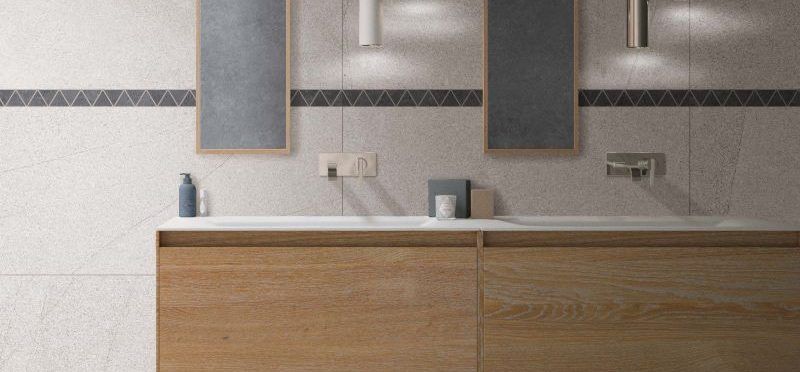Keeping Your Tile Looking Fresh All Year Long

After you’ve installed attractive tile floors and are enjoying the aesthetic, it’s time to think about maintaining the look for as long as possible. Tiles are a pleasing addition to any room in the home and keeping them looking fresh and spotless doesn’t have to be overly difficult.
Before we delve into cleaning each type of tile, it’s helpful to decide on a regular cleaning schedule for both dry and wet maintenance to keep tile looking residue-free.
Tile Cleaning Schedule:
1 x Week: Sweep and vacuum at least once per week to clear debris build-up. A soft-bristle attachment on the vacuum is safe for most types of tile. Finish off tight corners or other spaces with a broom and dustpan.
Bi-Weekly: Mop kitchen and bathroom flooring tile every week or two, depending on foot traffic.
Monthly: Take the time to spot clean grout every month or two to keep it from becoming grimy and worn.
Tip: When a family member is sick, make sure to clean more often, particularly in the bathroom, to prevent the spread of germs.
Types of Tile Cleaning Guidelines:
Granite
Harsh chemical cleaners can damage the surface of natural stone tile, so it’s best to avoid these types of cleaners and instead choose a stone tile cleaner. With granite, a pH-neutral detergent is ideal since it won’t leave unsightly streaks or discolour tile. Polished granite flooring can also be buffed to keep it looking glossy.
Slate
Coated slate tile should be dried after washing with a soft cloth to avoid water spots. A mild detergent is fine to wet wash as long as it doesn’t contain acid like lemon or vinegar.
Marble
Marble takes a tad more to maintenance than other stone tile. Lemon and vinegar cleaners should also be avoided since they can etch the surface of this type of tile. A gentle, pH-neutral cleaner should be used with a soft cloth or mop. Also avoid using tough bristles or scouring powders on marble for it can scratch.
Ceramic & Porcelain
Durable and easy to clean, sweep or vacuum tile floors on a regular basis. While ceramic tile is resistant to dirt, grit can dull the surface. Next, mop tile with a rag and chamois-type mop with mild detergent and clean water. Avoid using a sponge mop as it tends to drive dirty water into grout lines. Change water frequently while mopping to avoid cloudy tile.
Vinyl
More resilient tile materials, including vinyl, linoleum, and cork, are more restful to stand on and require minimal upkeep. Vinyl simply requires a weekly sweep or vacuum and a water and vinegar cleaning solution. A scrubber or abrasive cleaner should never be used on vinyl as it will scuff.
Linoleum
Similar in appearance to vinyl flooring, after sweeping and vacuuming, linoleum tile can be washed with a linoleum floor cleaner or borax and water solution. It should also be rinsed clean. A protective coating of wax or liquid wax can be applied and buffed every 3-6 months for extra luster.
Cork
How to clean cork depends on the finish of the tiles. If the surface is sealed with polyurethane, it may be cleaned with water and a mild detergent (or even vinegar) and rinsed. If the cork tile is unfinished or waxed, it can be cleaned the same as the sealed cork but then coated with a solid or liquid wax once dry.
Tip: A steam mop can damage these types of tiles since they’re not designed to withstand extreme temperatures or excess moisture.
On a final note, remember to clean the grout as well since grimy grout can make tile appear old and dirty. Grout also absorbs greasy residue due to its porosity. To keep grout looking fresh, make a paste with good old baking soda and water. Rub it into stained grout, let sit over night, then scrub with a stiff nylon brush. Commercial cleaners and metal brushes can be too abrasive.
Tip: A silicone-based sealer, applied 10-14 days after grout is installed or refreshed, helps prevent future stains, thereby making your cleaning job easier.